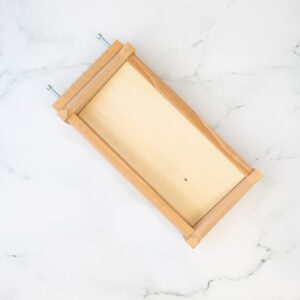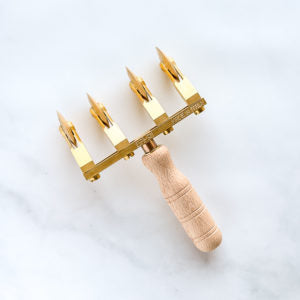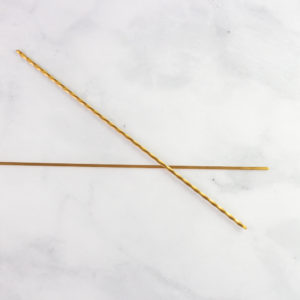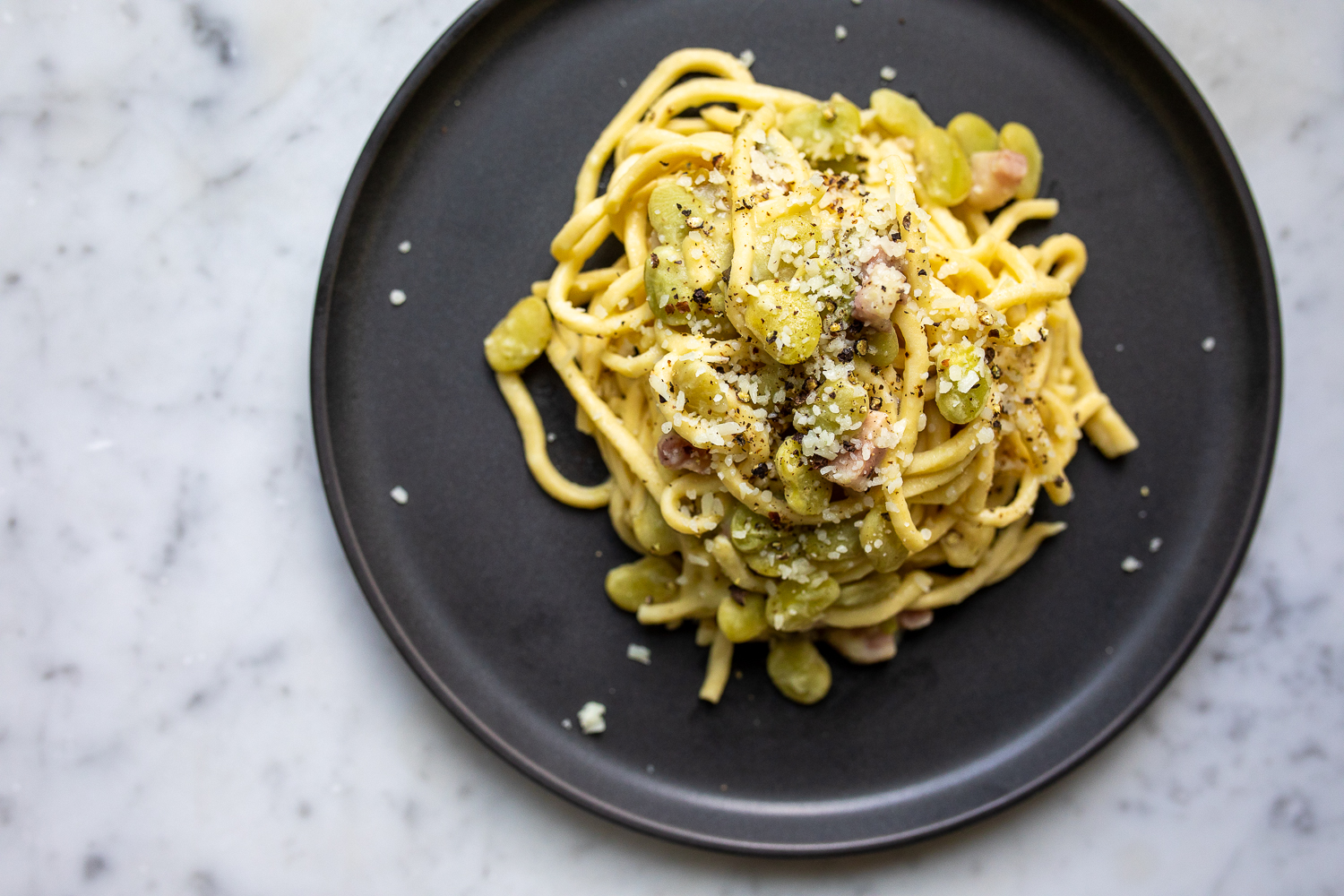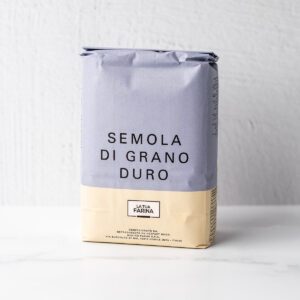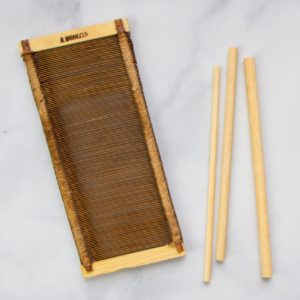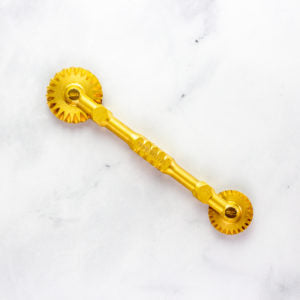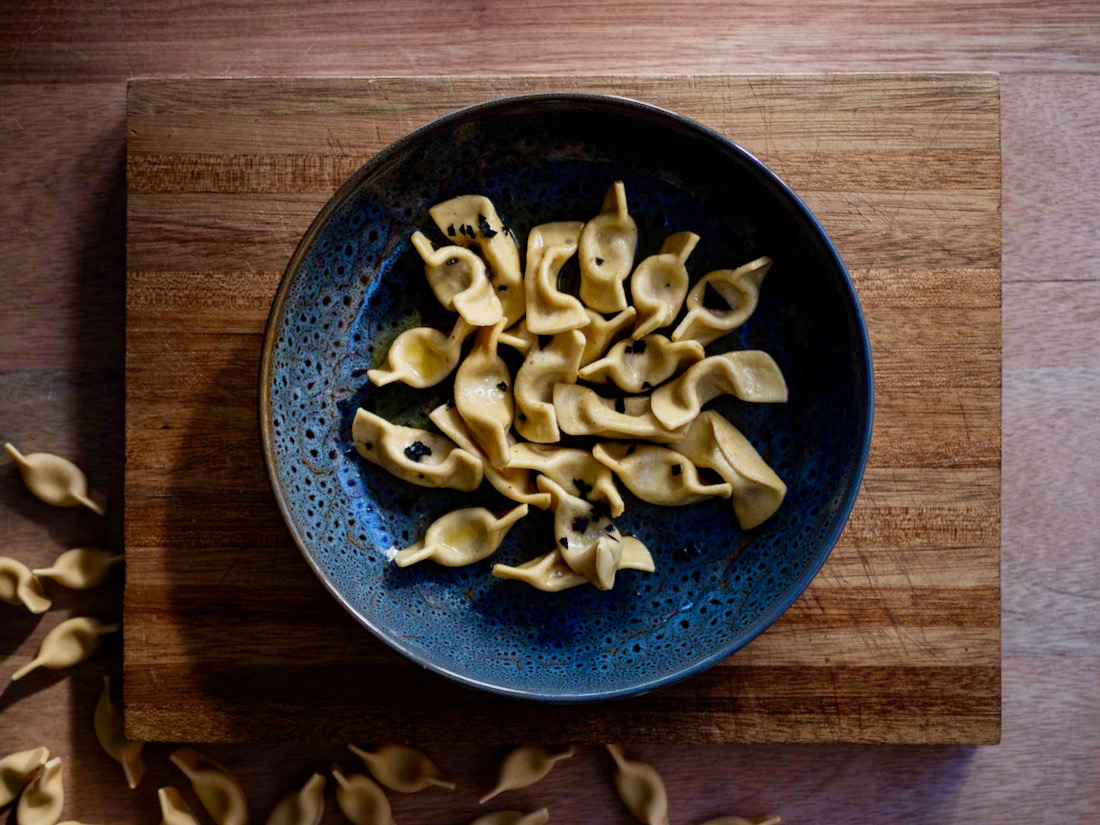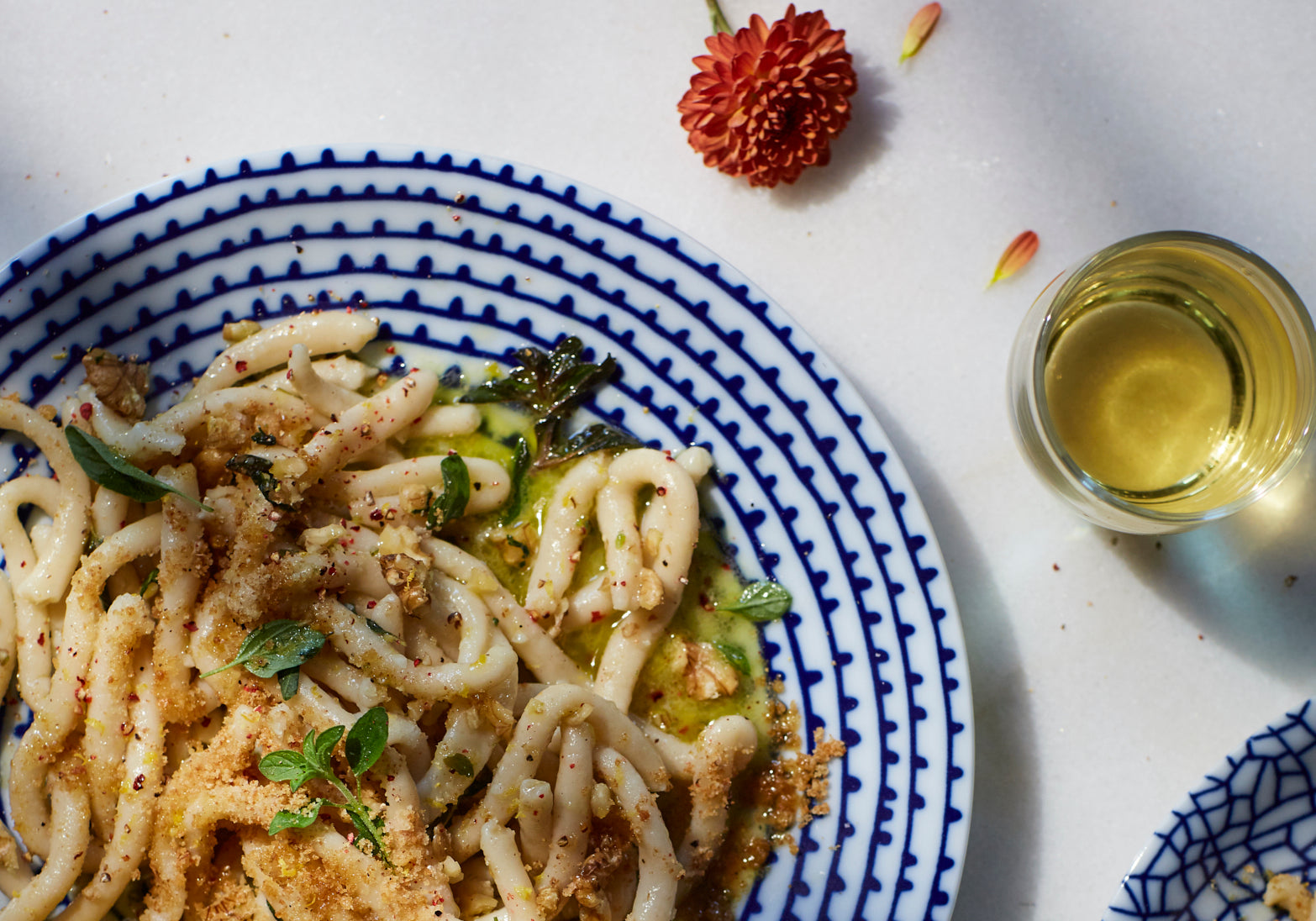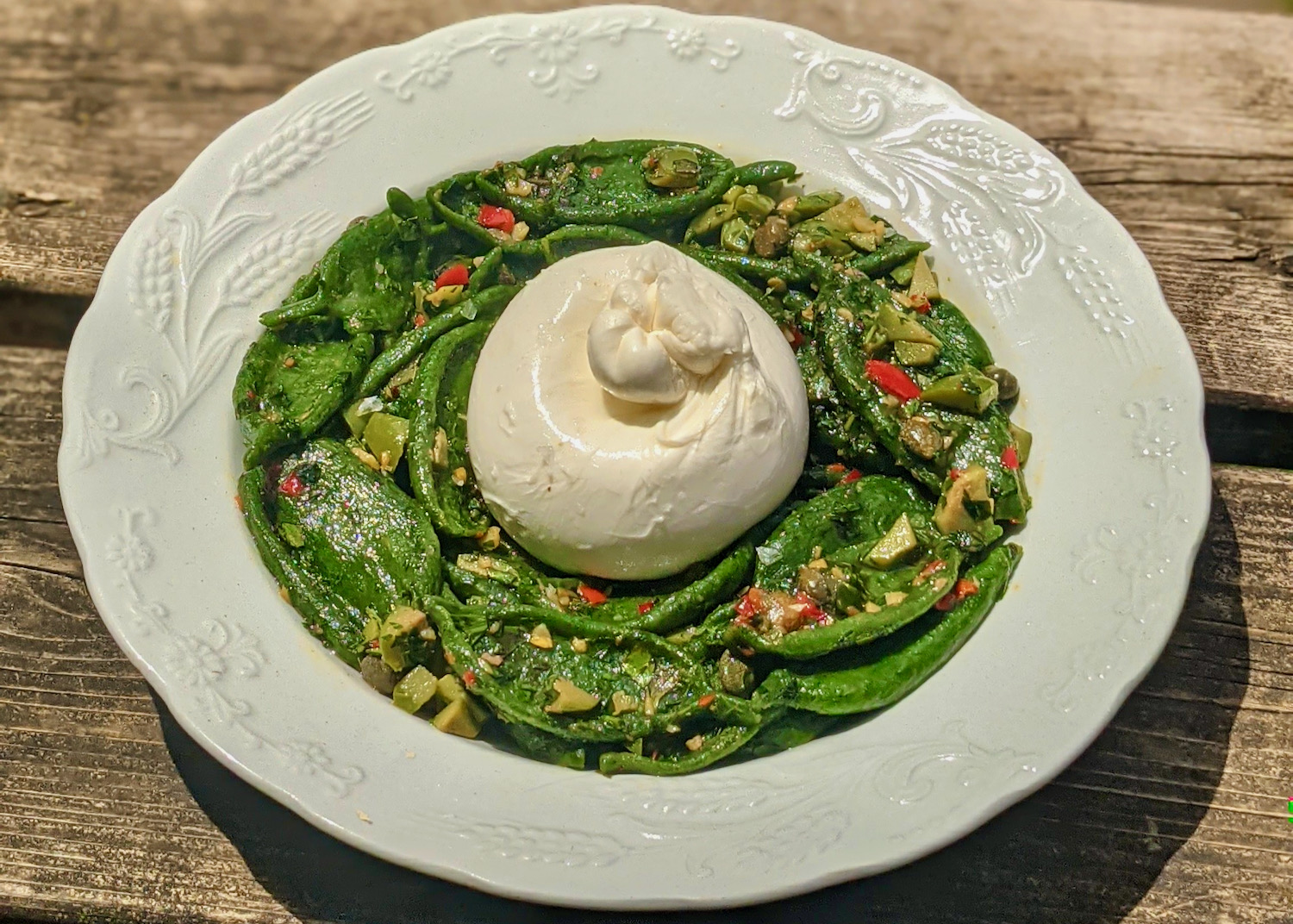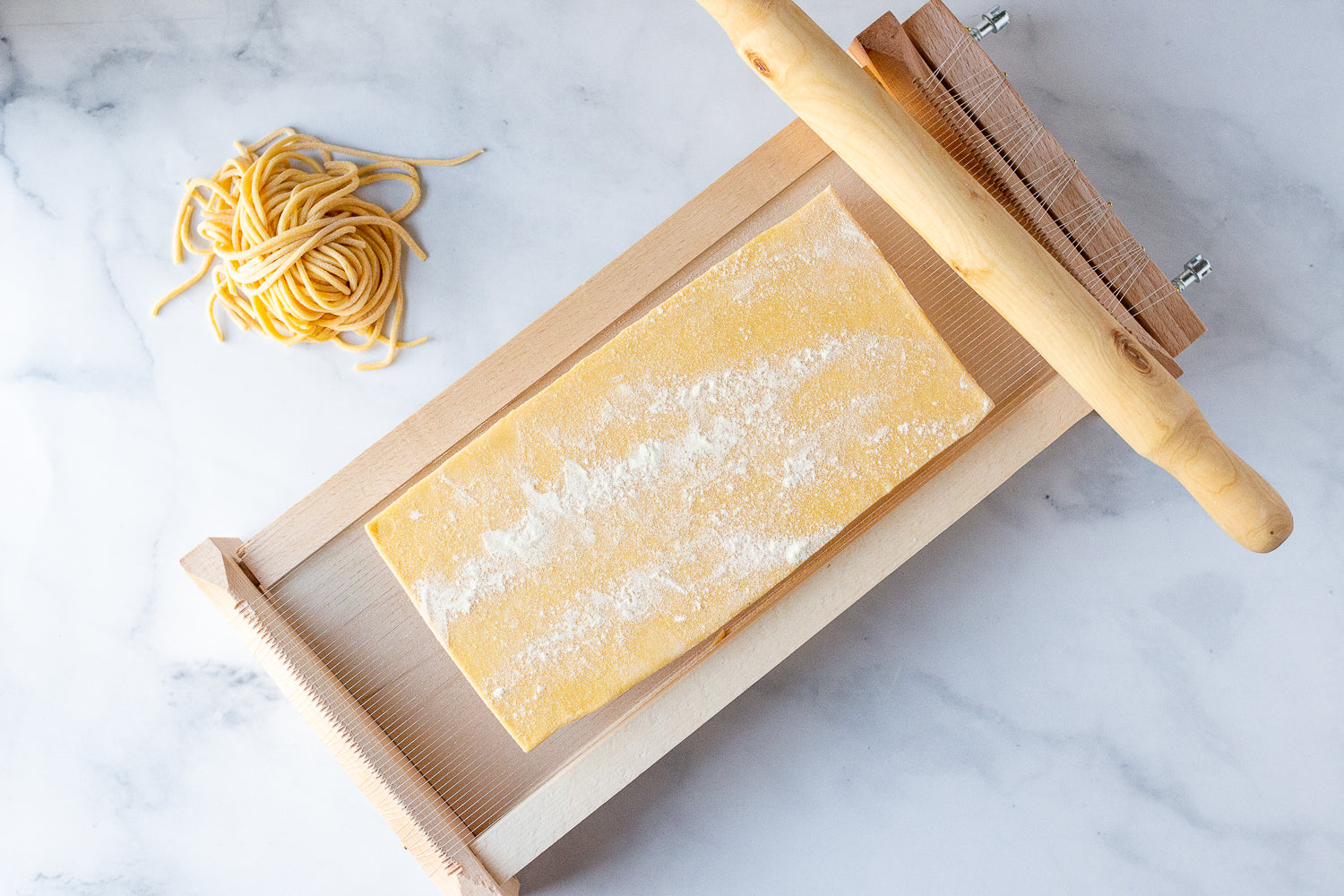
5 Tips for Perfecting Spaghetti alla Chitarra
Making fresh spaghetti alla chitarra is no easy feat. But, with a little practice and knowledge, you can learn how to “play” the chitarra pasta tool and create beautiful, square spaghetti in no time!
Hailing from the mountainous region of Abruzzo, spaghetti alla chitarra are square-shaped spaghetti made using a special tool known as the chitarra, or guitar. Similar to the musical instrument, this ancient tool is made up of a rectangular wooden frame with thin metal strings running lengthwise, attached on both ends.
In Abruzzo, spaghetti alla chitarra are also known as maccheroni alla chitarra and they are often paired with a rich lamb ragu. This type of pasta is also popular in the neighboring Lazio region, particularly in Rome, where the proper name is “tonnarelli,” typically served Cacio e Pepe or Carbonara style.
Traditionally, this spaghetti alla chitarra is made from a simple flour-and-water dough. Nowadays, however, many chefs like to use a fresh egg pasta dough, giving preference to the richer flavor over tradition.
The Technique: How to Successfully Use the Chitarra
The first time I tried to make spaghetti alla chitarra on my own felt a lot like trying to learn how to play the real guitar without knowing the notes. Using the chitarra tool was not as easy as I remember my Roman cooking instructor made it out to be! The dough would get stuck on the strings, leaving me no choice but to rip it off and turn my precious dough into a sticky, messy ball.
I quickly learned that making pasta alla chitarra is different from making regular fresh pasta. There are a few precautions you need to follow in order to make the chitarra work the way you want it to. And of course, practice makes perfect!
Here are a few tips for playing la chitarra.
1. Roll your dough as thick as your spaghetti are wide.
Whether you’re sheeting your pasta dough through a hand-cranked pasta machine or rolling it out by hand, be sure not to roll it too thin. You want your sheet of dough to be the same thickness as the spaghetti alla chitarra are wide. This is because spaghetti alla chitarra should be “square” and have a bit of a bite to them.
Aim for about 3 millimeters or ⅛-inch thick. Usually this is the third or fourth setting on your hand-cranked pasta machine.
2. Leave a border between your sheet of dough and the ends of the chitarra strings.
When laying your sheet of pasta dough on top of the chitarra, you’ll want to leave at least 2 inches open on the top and bottom ends of the dough. The dough will stretch out a bit when you use the rolling pin to press it through. By leaving yourself some margin, you’ll help prevent the pasta dough from running over the edges.
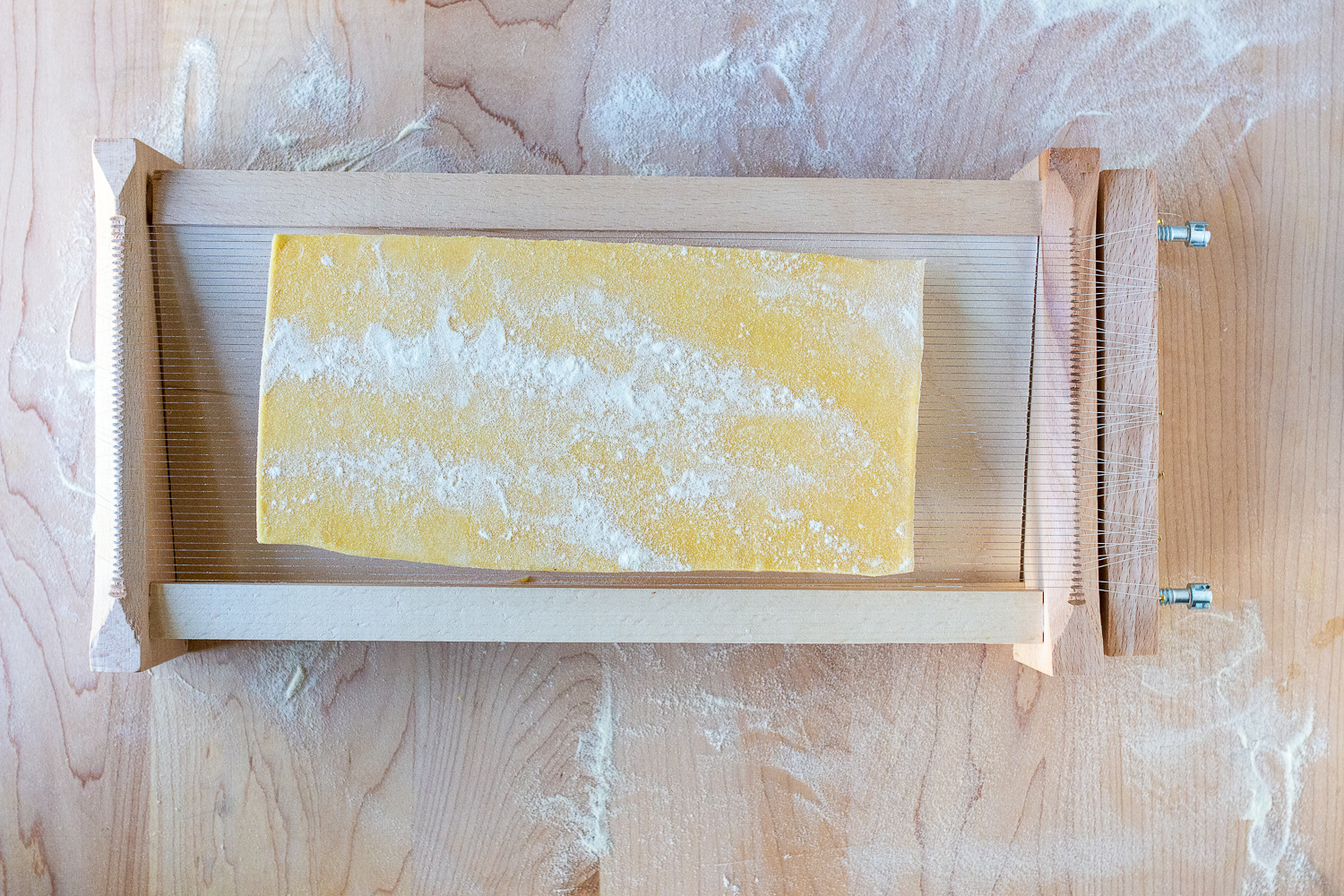
3. Semolina flour is your best friend.
When rolling out the final sheet of dough, dust it with coarse semolina flour before running it through the pasta machine. Then, dust it again on both sides before pressing it through the chitarra strings. Once the spaghetti are cut, drag them across more semolina flour to coat each strand before setting them out on the tray.
Coarse semolina will not only prevent the spaghetti from sticking to the machine and to each other but also adds an extra layer of texture to your pasta!
4. Press it, press it real good.
One of the keys to successfully using a chitarra is to apply an even amount of pressure on the rolling pin when pressing the dough through. It can be helpful to press the “ends” of the dough through first, as they’ll help the middle part of the dough roll fall through (thank you gravity!). Keep repeating the rolling motion until all the spaghetti have been cut. You may have to repeat this 15-20 times!
5. When all else fails, tune your guitar.
Tried everything above but still having trouble pressing the dough through? Your chitarra strings may be too loose. Over time, the strings will become less taut so it’s important to “tune” your chitarra.
To tighten the strings, simply use a flat-head screwdriver to turn the large screws until the strings are tight again. Just be careful not to turn them too much or you might break a string!
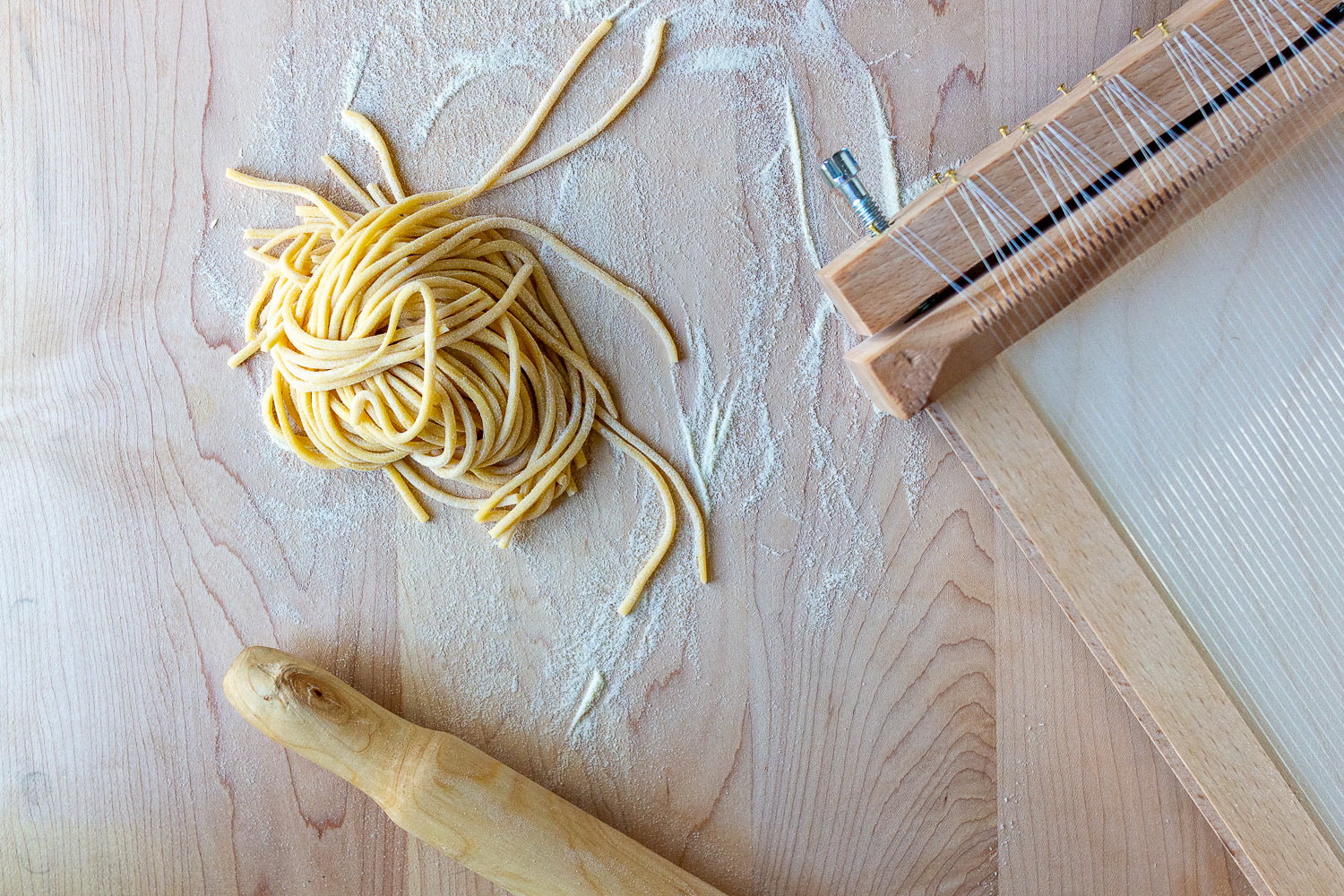
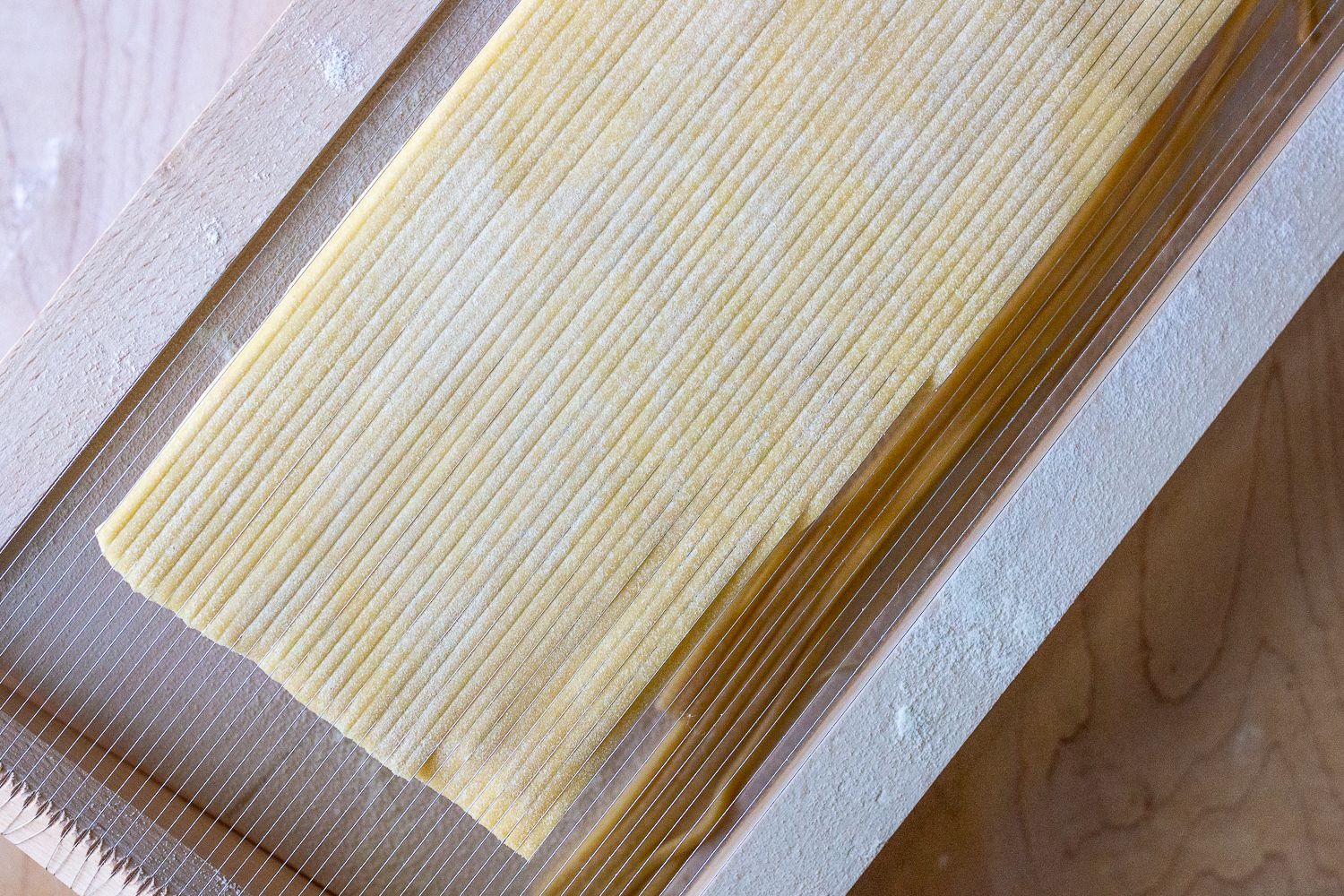
Spaghetti alla Chitarra
Serves 2-4
Prep time: 15 Minutes, plus 30 minutes resting
Cook time: 0 Minute
Special Equipment
Chitarra
Rolling Pin
Hand-Cranked Pasta Machine (if not rolling by hand)
Ingredients
360 grams (about 2¾ cup) 00 flour
4 eggs
about 1 cup coarse semolina flour, for dusting
Method
Dump the flour onto a clean work surface. Using your fingertips, make a well in the center of the flour.
Crack the eggs into the middle of the well, being careful not to let them spill out. Using your fingertips or a fork, carefully mix the flour and the eggs together until a shaggy dough forms.
Knead for about 15 minutes, until smooth and homogenous, adding more flour if the dough feels sticky. Once the dough is smooth and no longer changing in appearance, wrap in plastic wrap and set aside. Let rest, covered at room temperature, for at least 30 minutes.
If using a hand-cranked pasta machine, roll out the dough, a quarter at a time, into rectangular sheets, about ⅛-inch thick. Dust with a generous amount of coarse semolina flour. Trim the ends of the rectangle before laying over the chitarra, so that there are at least 2-inches of open space between the top and bottom ends of the dough and the point where the chitarra strings end.
Roll a rolling pin over the sheet of dough, applying an even amount of pressure from top to bottom. Repeat this motion until the sheet is cut and the spaghetti fall through the strings. Flip the chitarra sideways and use one hand to catch the spaghetti as they slide through the open side. Drag the freshly cut spaghetti through more semolina flour before nesting and setting aside on a parchment or tea towel-lined baking sheet.
Continue in this way until all the dough has been used. Cook the spaghetti in a pot of salted, boiling water for about 3-4 minutes. Serve with desired sauce.
Spaghetti alla chitarra can sit out at room temperature for up to 2 hours, or they can be stored in the fridge for up to 24 hours. Be sure they are dusted with plenty of semolina flour to keep them from sticking to one another.
What should you pair with your spaghetti alla chitarra? Try our Cacio e Pepe or this modern-Roman twist, Lima Beans, Pancetta, and Pecorino.
Post a Comment
You must be logged in to post a comment.


